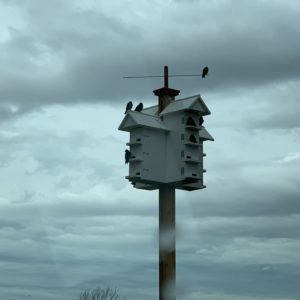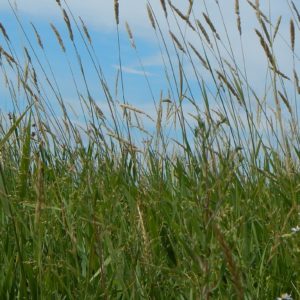Sei Whale and Short-Fin Mako Shark Endangered; Hudsonian Godwit Threatened
Monday May 6 was not a great day for species at risk.
On the morning of May 6, the 455 scientists on the UN’s Intergovernmental Science-Policy Platform on Biodiversity and Ecosystem Services (IPBES) announced that close to one million species are nearing extinction globally. That same afternoon, Canada’s Committee on the Status of Endangered Wildlife in Canada (COSEWIC) announced its revised list of species at risk.
The news is not good
COSEWIC scientists have determined that the Sei whale and the short-fin mako shark are now endangered, and the Hudsonian godwit is threatened. COSEWIC decided that the Vancouver Island marmot should remain on the endangered species—it was first listed as endangered in 2008.
One bit of good news is that the status of the Pacific population of fin whale is improved from threatened to special concern; the Atlantic population of fin whale also has a special concern status.
Members of the same family as the blue and fin whale, the Sei whale inhabits most oceans and prefers deep offshore waters. The short-fin mako is the fastest-swimming shark in the world. This species is more vulnerable than many other Atlantic sharks because of its long lifespan and low reproductive rate. The Canadian Atlantic population was listed as threatened in 2006, and was improved to special concern in 2017.
The Hudsonian godwit is a large shorebird that migrates from the Canadian Arctic to southern South America, but has a breeding range restricted to a small part of the Hudson Bay coast and small areas in Alaska and the Northwest Territories. Much of the population of Hudsonian godwit stops over in southern James Bay en route.
Species at risk need marine protected areas
These new species at risk listings underline the importance of protecting marine and coastal areas. Canada is committed to protecting 10 per cent of our oceans and has made good progress towards that goal in the past few years, announcing, for example, protection of the Laurentian Channel off the coast of Newfoundland and Labrador. The Pacific Deep Sea Oasis off the British Columbia also needs protection as a marine protected area. The Moose Cree First Nation are pressing for recognition of the James Bay coast as a Western Hemisphere Shorebird Reserve Network (WHSRN) site, and for recognition and respect by other levels of government that it is protected under Indigenous law.
Nature Canada is focused on ensuring a doubling of Canada’s protected areas by 2020. All tools available to governments, Indigenous communities and nature conservancies need to be deployed urgently to protect as much nature as possible: the $1.3 billion in the 2018 federal budget allocated to establishing new protected areas and protecting species at risk is a big boost in that effort.



